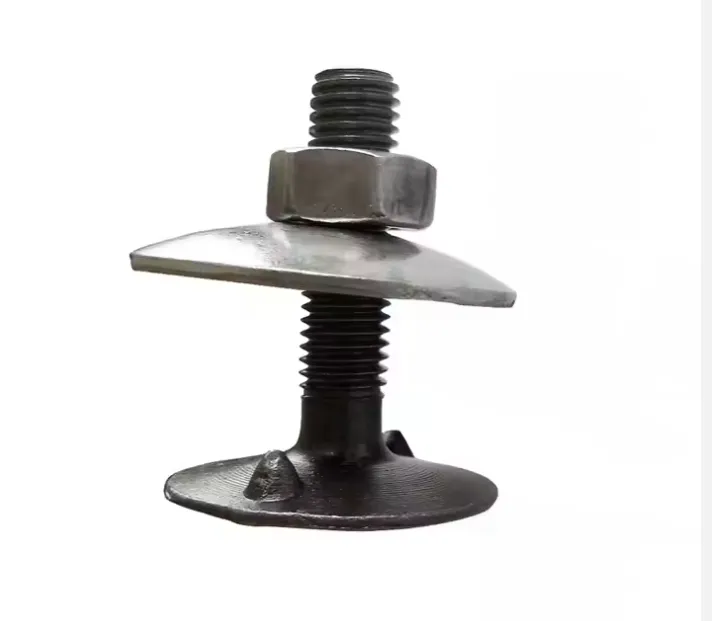

Types and Applications of Flat Washers and Spring Washers in Engineering and Construction
Dec . 04, 2024 09:07 Back to list
Types and Applications of Flat Washers and Spring Washers in Engineering and Construction
Understanding Flat Washers and Spring Washers Functions and Applications
Washers are essential components in many mechanical assemblies, serving a variety of purposes. Two of the most common types are flat washers and spring washers. Each type has its unique characteristics, applications, and benefits that make them crucial in various engineering and construction projects.
What is a Flat Washer?
A flat washer is a thin, ring-like piece of material, typically made from metal, that is used to distribute the load of a fastener, such as a bolt or screw. The main purpose of a flat washer is to provide a smooth surface under the fastener head or nut, minimizing damage to the surface being fastened. They also serve as a barrier to prevent loosening due to vibrations or thermal expansion.
Flat washers come in a variety of sizes and materials to accommodate different applications. Common materials include stainless steel, plastic, and aluminum, each chosen based on factors such as strength, weight, corrosion resistance, and electrical conductivity. The most common types of flat washers are standard washers, fender washers, and finishing washers, each designed for specific tasks.
Advantages of Flat Washers
1. Load Distribution The primary advantage of flat washers is their ability to distribute the load of a fastener over a larger area, which helps to prevent damage to the material being fastened.
2. Prevention of Surface Damage By providing a smooth surface, flat washers can prevent the fastener from digging into softer materials, preserving the integrity of the surfaces.
3. Vibration Resistance While they are not designed specifically for vibration, flat washers can provide some resistance to loosening in dynamic applications due to their larger surface area.
flat washer spring washer

What is a Spring Washer?
Spring washers, on the other hand, are designed to provide a greater level of fastening security through their inherent elasticity. Unlike flat washers, spring washers, such as split washers (also known as lock washers), have a shape that allows them to push back against the fastener, creating tension and friction that keeps the fastener in place. This design is particularly effective in applications where vibration might cause standard fasteners to loosen over time.
The most common type of spring washer is the split washer. It is shaped like a coil with a space in it that allows the washer to exert upward tension against the bolt or screw head. Other types of spring washers include wave washers and conical washers, each specializing in different load and mechanical characteristics.
Advantages of Spring Washers
1. Vibration Resistance Spring washers are particularly effective in applications where vibrations are present, as they provide strong resistance to loosening.
2. Elasticity The elastic nature of spring washers allows them to absorb shock and distribute loads effectively, which can enhance the longevity of both the fastener and the materials being secured.
3. Locking Mechanism Many spring washers are specifically designed to function as locking mechanisms, preventing accidental loosening of fasteners in critical applications.
4. Compact Design Spring washers can be used in confined spaces where a thicker flat washer would not fit, making them versatile components in various scenarios.
Conclusion
In conclusion, both flat washers and spring washers play vital roles in mechanical assemblies, ensuring the integrity and safety of bolted connections. While flat washers excel in load distribution and surface protection, spring washers provide excellent resistance to vibration and unintentional loosening. Understanding the different types of washers and their unique benefits is essential for engineers and builders when selecting the appropriate components for their projects. By carefully considering the requirements of specific applications, one can optimize the performance and reliability of mechanical systems, leading to more efficient and durable constructions.
Latest news
-
Hot Dip Galvanized Bolts-About LongZe|High Strength, Corrosion Resistance
NewsJul.30,2025
-
High-Strength Hot Dip Galvanized Bolts - Hebei Longze | Corrosion Resistance, Customization
NewsJul.30,2025
-
Hot Dip Galvanized Bolts-Hebei Longze|Corrosion Resistance&High Strength
NewsJul.30,2025
-
High-Strength Hot-Dip Galvanized Bolts-Hebei Longze|Corrosion Resistance&High Strength
NewsJul.30,2025
-
Hot Dip Galvanized Bolts-Hebei Longze|Corrosion Resistance&High Strength
NewsJul.30,2025
-
Hot Dip Galvanized Bolts - Hebei Longze | Corrosion Resistance, High Strength
NewsJul.30,2025

